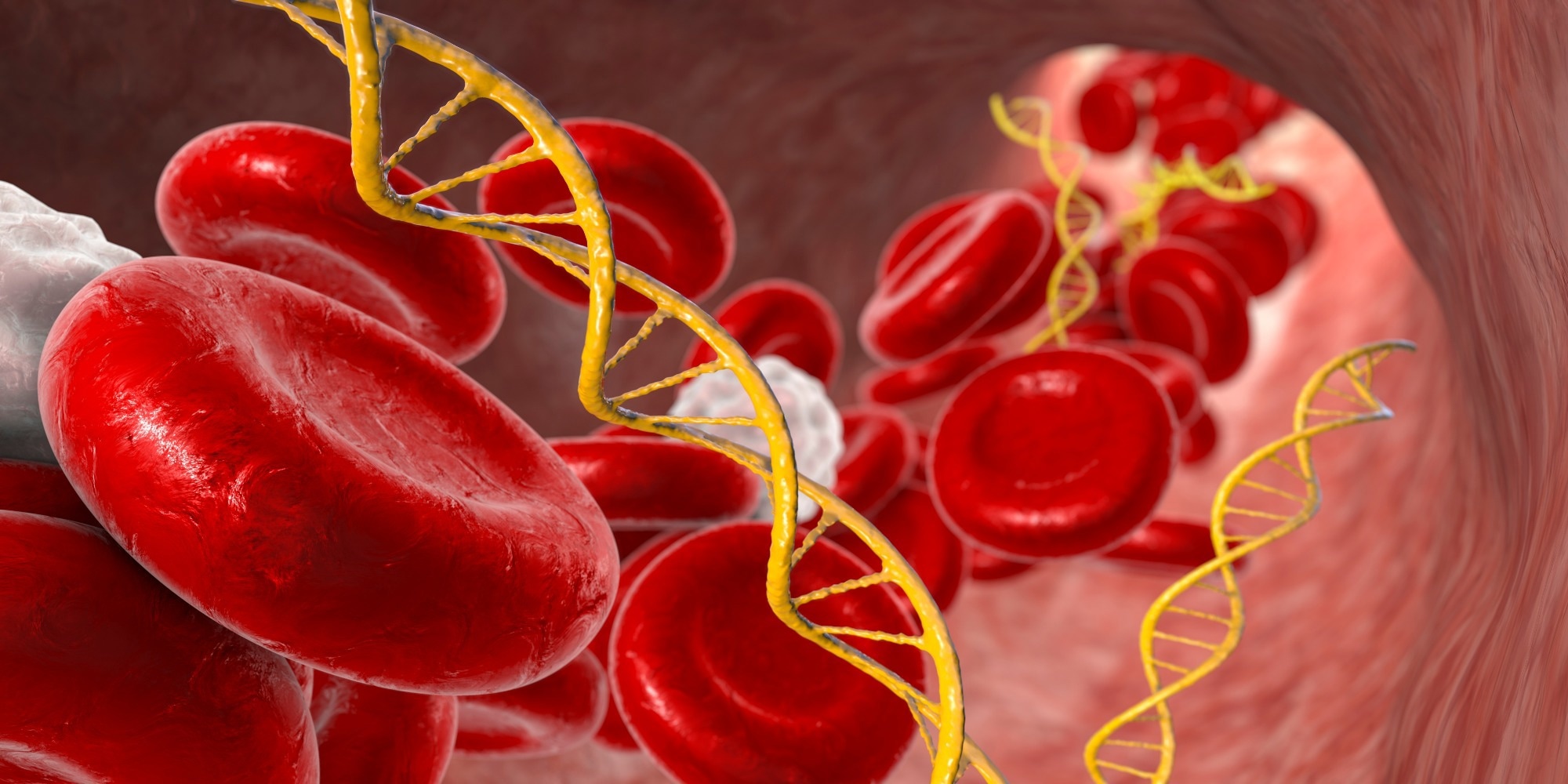In a study published in Cancer Discovery, researchers from Canada tested the use of a multimodal liquid biopsy assay based on cell-free DNA (cfDNA) for early cancer detection in patients with Li-Fraumeni syndrome.
 Study: Early Cancer Detection in Li-Fraumeni Syndrome with Cell-Free DNA. Image Credit: Kateryna Kon/Shutterstock.com
Study: Early Cancer Detection in Li-Fraumeni Syndrome with Cell-Free DNA. Image Credit: Kateryna Kon/Shutterstock.com
The researchers found that the assay showed increased sensitivity of detection as compared to unimodal assays and could also detect cancer-related signals prior to conventional cancer diagnosis.
Background
Li-Fraumeni syndrome (LFS) is a hereditary condition caused by germline mutations in the tumor suppressor gene TP53 (short for tumor protein 53), which increases the carrier’s risk of developing at least one type of cancer up to 100%.
As early detection is associated with improved outcomes in patients with cancer, an elevated cancer risk calls for frequent surveillance in the form of diagnostic tests, examinations, and imaging. However, there are several physical, economic, mental, and logistic barriers to intensive surveillance in LFS patients.
Liquid biopsy has emerged as a promising and relatively less invasive solution that allows the accurate detection of cancer-related genetic signatures, such as circulating tumor DNA (ctDNA) in blood samples, thereby eliminating logistic barriers to testing.
To address the dearth of data on the use of cfDNA in high-cancer-risk groups such as LFS patients, researchers in the present study developed a cfDNa-based multimodal approach to detect a wide range of cancer-related signals in patients.
About the study
In the present study, 193 venous blood samples (154 cancer-negative and 39 cancer-positive) were retrospectively collected from 89 individuals with a TP53 mutation (TP53m) in the age group 1–67 years.
The carriers were classified as follows: those who never had cancer (LFS-H, n=42), those with cancer history who recovered from cancer (LFS-PC, n=21), and those with active cancer (LFS-AC, n=26). About 18 TP53m-carriers were “phenoconverters,” who switched between cancer-negative and cancer-positive states or had multiple cancers.
The median clinical follow-up period of the study was 48.1 months. Consistent with previous literature, the present cohort of TP53m-carriers had a greater prevalence of breast cancer as compared to other types.
DNA and peripheral blood mononuclear cells (PBMCs) were extracted from blood samples. Genomic DNA was extracted from PBMCs, and DNA libraries were prepared for target panel sequencing (TS), shallow whole genome sequencing (sWGS), and cell-free methylated DNA immunoprecipitation sequencing (cfMeDIP-seq).
Bioinformatics tools such as ConsensusCruncher, the Genome Analysis Toolkit, MuTect2, and MedRemix were used for targeted sequencing mutation analysis and cell-free methylome analysis.
Various ctDNA metrics were determined, including somatic TP53m, copy number, tumor fraction, genome-wide fragmentation score, TP53 fragmentation score, pan-cancer methylation score, LFS-specific, and LFS-breast-cancer methylation score. The sensitivities and specificities of the individual and integrated assays were estimated.
Results and discussion
As compared to healthy controls, a greater proportion of short DNA fragments (<150bp) was observed in TP53m-carriers, which were further increased in cancer-positive TP53m-carriers as compared to cancer-negative ones.
When the genomic, fragmentomic, and epigenomic analyses of 38 cancer-positive samples were integrated, a cancer-associated signal could be detected in 81.6% of samples, thereby providing a sensitivity improvement of 31.6% – 55.8% over unimodal analysis.
The improvement in detection sensitivity was more significant in late-stage cancer samples than in early-stage ones. While the false-positive rate was found to be 18.3% within samples, only 2 out of 57 samples were found to be false negative.
When cancer-free TP53m carriers were analyzed, the negative predictive value was found to be 95.4%, an improvement of 16.6 – 34.6% over unimodal analysis. A cancer-related signal could be detected in 35.6% of the patients at a clinically cancer-free stage. However, a focused follow-up is necessary to determine the actual false positives among these.
When individual LFS cases were analyzed, multimodal analysis was found to be as sensitive or even outperform conventional clinical screening approaches. Thus, as per the study, the incorporation of cfDA-based diagnosis can complement existing diagnostic and management modalities for cancer, especially in high-risk populations.
Given the relatively less invasive nature of these integrated tests, they may allow an increased testing frequency among high-risk patients. However, the study is limited by its retrospective design and the low adoption rate of cfMeDIP-seq in clinical settings compared to TS and sWGS methods.
Further research is required to clinically validate this cfDNA-based method in LFS patients for improved outcomes.
Conclusion
In conclusion, the integrated cfDNA approach used in this study can show earlier cancer detection in LFS patients, with improved sensitivity compared to conventional imaging.
The use of accessible multimodal assays in conjunction with conventional screening modalities could potentially increase the sensitivity, specificity, and robustness of cancer detection to optimize care for high-cancer-risk patients.